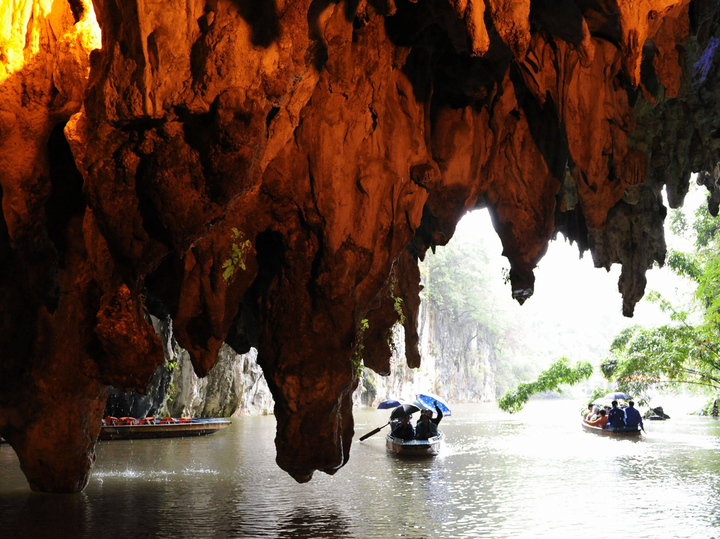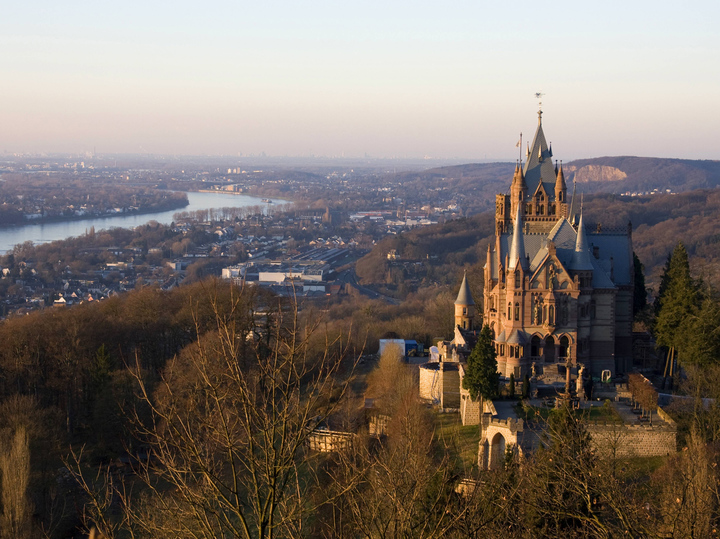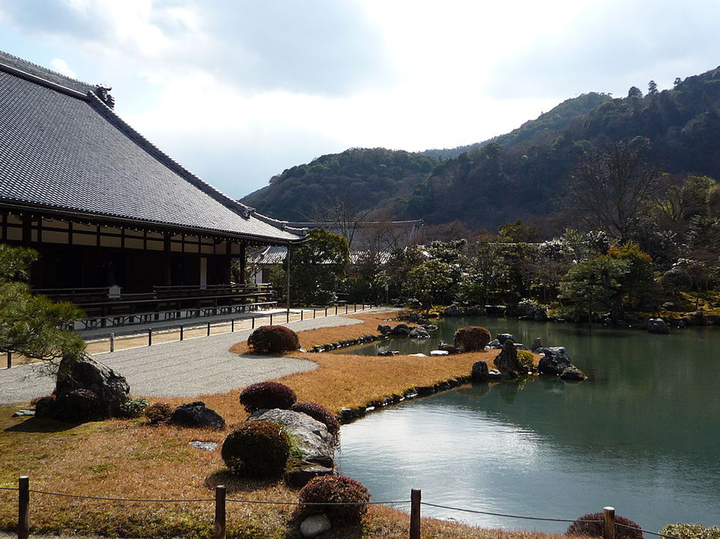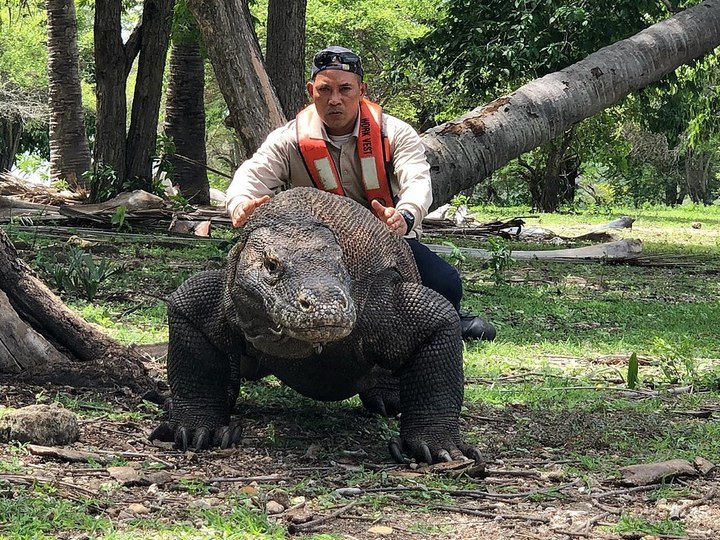Where dragons lived: the symbol of the year prefers comfort and prosperity
[ad_1]
Drakensberg Mountains, South Africa
The 1,169-kilometer-long mountain range passes through the territories of South Africa, Lesotho and Swaziland. The green ridges of the ridge truly resemble a dragon’s back. The ridge has a unique structure – it does not break up into separate peaks, but creeps along in a long, curved ribbon, like the tail of a dragon.

The reason for this is the peculiarities of education. The mountain range was formed as a result of the uplift of the earth’s crust and the discharge of basalt. The highest point of the Drakensberg Mountains is the Thabana Ntlenyana peak, 3482 meters high, which is located in Lesotho. A mountain range with such an extraordinary name, of course, could not but have its own legends and myths. Local residents will definitely tell you about the fire-breathing dragon that lived in these places. And not so long ago: supposedly the last time he was seen was in the 19th century. Or maybe he lives in ancient caves to this day. Proof of this is the foggy haze enveloping the tops of the ridge, so similar to steam from the nostrils of a dragon. However, for those who do not believe in the mythical amphibian, the mountains are also of considerable interest. On the territory of the Ukashlamba-Drakensberg Nature Reserve there are caves with prehistoric writings, some of which are more than 100 thousand years old. For this reason, the reserve is included in the UNESCO World Heritage List. The most convenient way to get to the Drakensberg Mountains is from the city of Durban in South Africa, whose airport accepts international flights. Just a couple of hours drive and you are in mysterious mountains with stunning views.
Dragon Palace, China, Guizhou Province
Where could the Dragon Palace be located? Of course, in deep caves. It is in such an underground cave system – with lakes, waterfalls and stalactites – that the Dragon Palace is located in the suburb of Anishun. Actually, this name is given to the main, large cave of the karst system, similar to a huge crystal hall. In general, these underground labyrinths, covering an area of about 60 square kilometers, unite 90 caves, through which the longest underground river in China flows.

Tourists are taken on a boat along this waterway to the underground kingdom. The boat slowly moves along the river, amazing stalactite and stalagmite “figures” float past. The destination of the journey is the majestic Dragon Palace with steep walls and jagged stone forest. Chinese mythology describes a great variety of different dragons. Among them there are water, flying, and underground. By the way, according to Chinese dragonography, underground dragons were charged with guarding treasures. And they looked like this: “The dragon has the antlers of a deer, the head of a camel, the eyes of a rabbit, the ears of a bull, the neck of a snake, the scales of a carp, the claws of an eagle, the paws of a tiger.” And that same green dragon, whose year awaits us, has the name Qing-Long. This green monster is “extremely friendly towards people.” Its green color represents spring. Meeting him
promises people wealth. His entire body is covered with scales made of gold coins. Soaring in multi-colored clouds, Qing-long sprinkles pearls, gold, silver, and corals on the ground. If you want to try to meet him, go to the city of Anshun. There are regular buses to the Dragon Palace from the local bus station. Perhaps you will be lucky, and Qing-Long will appear to you.
Dragon Castle, Germany, Westphalia
At the top of Mount Semigorye on the banks of the Rhine near the city of Bonn stands the fabulous Drachenburg Castle, which literally means “dragon castle”. Gothic spiers rise above the green blanket of forest that covers the local hills. The castle is just over a hundred years old, but it truly looks like a medieval miracle.

A wealthy broker from Bonn, who received the nobility and became Baron Stefan von Sarter, wanted to build his estate in this style. The castle was built in record time – from 1882 to 1884. But the baron himself was almost never here. He preferred to live in Paris. And in 1902 he suddenly died without having time to draw up a will. His nephew Jacob Biesenbach took over the inheritance and turned the castle into a hotel for wealthy travelers. Later there was a military school for the National Socialists; during the war the castle was almost completely destroyed. It was restored already in the 70s of the last century by the new owner Paul Spinach, who, unlike the first owner, lived in the rebuilt castle, practically without leaving it. After his death in 1986, the castle became an architectural monument subject to the state program for the protection of historical monuments. The question arises, what does this have to do with the dragon after which the castle is named? The guides will definitely tell you that it was in this mountain, in a cave located not far from the castle, that the legendary dragon from the epic of the Nibelungs lived. It was his blood that washed the hero of the Saga Siegfried, becoming immortal. And all the main events of the epic took place in the vicinity of Castle Drachenburg. Believe it or not, just enjoy the magnificent views from the castle’s observation deck and the exquisite interiors where admirers of the ancient legend once lived.
Temple of the Heavenly Dragon, Japan, Kyoto
Tenryuji Temple is located in the west of Kyoto, at the very foot of Mount Kameyama. This traditional-looking temple complex is famous for its many gardens – the oldest in Japan. Over the course of its centuries-old history (it was founded in 1329), the complex itself has experienced destruction and fire more than once. And only the gardens, founded by the first abbot of the temple, Muso Soseki, survived all the hardships, reaching us practically unchanged.

You must understand that these gardens are Japanese, that is, they are famous not so much for the abundance of plants as for their philosophical concept. For example, the center of the garden is considered to be a “stone waterfall” – in which there is no water, but there is a composition of stones symbolizing a water flow… There are also reservoirs in the gardens – this is a lake in the shape of a hieroglyph meaning “enlightened heart”. There is also a sand garden and a moss garden. And there are plenty of trees here: plantings begin right behind the lake, smoothly flowing into the natural forest on the slope of Mount Ogura. Tourists go to these gardens for peace and true “zen”. And if someone has a question: “What does a dragon actually have to do with it?”, then they are immersed in the history of Japan. Once on the site of the temple there was a palace of Emperor Go-Saga. However, the Japanese ruler was overthrown as a result of an uprising by members of the movement for the restoration of “direct imperial rule” led by Ashikaga Takauji. Go-Saga spent the rest of his life in exile, where he died. After this, rumors appeared that the deceased emperor had incarnated himself in the form of a dragon and was seeking revenge. To appease the spirit of the dragon emperor. Takauji ordered the construction of a temple complex on the site of the former residence.
“Dragon Park”, Russia, Primorsky Krai
Unlike Japanese rock gardens, the Russian dragon park was created by majestic nature. Looking at the sharp thorns growing right above the forested slopes, at the amazing rock formations that sometimes resemble a dragon’s head, sometimes a rearing snake or a small dragon, it is difficult to get rid of the feeling that this is the creation of human hands. However, all this is a masterful work of the elements and time, which created a real dragon kingdom on the southeastern slope of the Partisan Ridge in Primorye.

Tourists are attracted here not only by the enchanting beauty of wild rocks, but also by the mysterious flair of legends and myths. One of them says that the stone idols and towers did not appear here on their own, but are the remains of an ancient civilization that has passed into the past. The stone peaks and arches are positioned too geometrically correctly. Suspicions are also fueled by the famous park high reliefs – rock formations resembling human faces that are found here and there. At the entrance to the park, a portal made of stones awaits visitors, and inside there are many narrow passages similar to streets. One of the “streets” was named “Tunnel of Happiness”. If you go through it, you will be lucky. And the inhabitants of the ancient city, as the myths say, were those same dragons. That is why so many of their “statues” have remained here since then.
Dragon Island, Indonesia, Komodo
Unlike previous locations, the Indonesian island received its second name not from mythical dragons, but from very real ones. Who have filled Komodo and feel like full-fledged masters there. Komodo dragons are the largest in the world and are not called dragons for nothing. They impress not only with their size (far from the size of mythical creatures – only 2-3 meters in length), but also with their cool disposition.

They can attack if they don’t like something. In addition, the bite of the Komodo dragon is very poisonous. Therefore, it is better to admire them from afar. True, local residents, of whom there are only about two thousand on the island, treat lizards like domestic cows. Well, unless they milk it. And so the monitor lizards “graze” near the village, hoping to catch something tasty. Sometimes they even look into the courtyards. Nobody is afraid of them here. And if they get impudent, the residents threaten them with a stick. Komodo dragons, having been repeatedly hit with this contraption by the locals on their curious noses, immediately change their trajectory and proudly retreat into the thickets. By the way, local legend says that the inhabitants of the island and the dragons are fraternal brothers. And they won’t be able to live without each other. This is the legend. “In the beginning there were 2 eggs. The first to hatch was the orang komodo (man of the Komodo people) and was named the elder brother. Following him, Ora (Komodo dragon) was born and they named him his younger brother. Their fate is inextricably linked and one cannot live without the other.” As an example, they tell how the Indonesian authorities decided to move all the inhabitants of Komodo to Sumbawa in order to make the island a National Park inhabited only by animals. But a miracle happened – the dragons left after the inhabitants. That’s why the village still exists today. If people are evicted, the dragons will disappear…
[ad_2]
Source link








